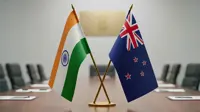Asia Pacific mobile phone sales reach 164 million in 2004: Gartner
By Our Infotech Bureau | 12 Apr 2005
Mumbai: Demand for low-tier handsets targeted at prepaid replacement or new users in emerging markets helped propel Asia Pacific mobile phone sales to 164 million in 2004, a 24.1 per cent increase compared with 2003, according to the latest figures from Gartner Inc.
Nokia's success in overhauling its channel strategy in high-growth markets such as China and India ensured it maintained its market leadership in the Asia Pacific region with a 30.8 per cent share of mobile phone sales during 2004 (see table). Nokia's total annual sales to end users in Asia Pacific reached 50.6 million, a 28 per cent increase compared with 2003. This was driven by strong demand for mid- and low-tier models including the 2300, 2650, 3200, 3315 and 6100.
"Phones with cameras and colour screens accounted for the majority of sales in the low-tier segment, slowly eroding the share of black and white display handsets," discloses Ann Liang, principal analyst, Gartner, for mobile terminals research in the Asia Pacific region.
She continues, "Sales of 3G handsets were disappointing, due to a lack of popular models and with operators continuing to focus 3G marketing efforts on customers with high calling patterns. This resulted in slow WCDMA sales despite strong seasonal marketing campaigns, although we expect increased activity through 2005 in line with network launches and improved availability of 3G handsets."
In Hong Kong, sales of mobile phones to tourists from Mainland China outstripped local replacement sales. Meanwhile, Indonesia saw sales through illegal channels flourish as tight import policies inhibited growth and distributors became increasingly reluctant to maintain large inventories to avoid high import taxes.
Asia Pacific mobile terminal sales to end-users in 2004 (thousands of units)| Company | 2004 Sales | 2004 Market Share | 2003 Sales | 2003 Market Share | Market Share Change |
| Nokia | 50,643.3 | 30.8% | 39,475.1 | 29.8% | 1.0% |
| Samsung | 28,176.5 | 17.1% | 21,441.5 | 16.2% | 1.0% |
| Motorola | 18,583.5 | 11.3% | 16,807.8 | 12.7% | -1.4% |
| LG | 9,371.3 | 5.7% | 9,038.2 | 6.8% | -1.1% |
| SonyEricsson | 8,108.5 | 4.9% | 4,440.1 | 3.4% | 1.6% |
| Bird | 5,832.1 | 3.5% | 5,973.0 | 4.5% | -1.0% |
| Others | 43,738.8 | 26.6% | 35,354.8 | 26.7% | -0.1% |
| Total | 164,454.0 | 132,530.5 |
Source: Gartner Dataquest (March 2005)
Samsung also performed well in the region during 2004, increasing sales volumes by 31 per cent and adding 1 per cent market share.
"Samsung gained ground in 2004 achieving 28.2 million handset sales in the Asia Pacific region," she says. "Compared with last year, Samsung achieved improved visibility in South East Asia for both GSM and CDMA products. Heavy advertising and marketing campaigns reinforced a strong second position for them in this region. However, during the final quarter of 2004, sales slowed due to lack luster demand in the Korean market as well as delays in launching new models and a limited range of low-tier models on offer."
Gartner expects Samsung to face increased competition as Motorola strengthens its product range through 2005 and focuses on improving its market share.
According to Kobita Desai, Principal Analyst at Gartner, "Sales in 2004 were robust for the Indian market with mobile phone sales scaling up to around 21 million. Recent policy initiatives implemented during the annual budget will stimulate adoption of mobile services, fueling demand for handsets."
"In the coming months, the advantage will be with those who will focus on expanding their channel outlets and undertake aggressive brand build up exercise as mobile operators extend their networks into provincial towns. Increasingly, we're seeing an environment evolving where mobile operators are going to play a distinctive role in providing guidance for handset features as also the price points," she says.
In China, both TCL and Bird had a tough year with TCL dropping out of the top six regional ranking in 2004 to be replaced by Sony Ericsson. Bird's sales disappointed full year expectations, with full year volumes down 1.4 per cent compared with 2003.
"Both TCL and Bird have been facing a range of problems including a build-up of inventory, as well as lacking an effective defensive channel strategy and a proliferation of low-end products that lost popularity among local Chinese customers," said Liang. "We expect TCL and Bird to undergo a complete overhaul in their product portfolios and channel strategies with both vendors aggressively cutting their channel commissions and operational costs."






















